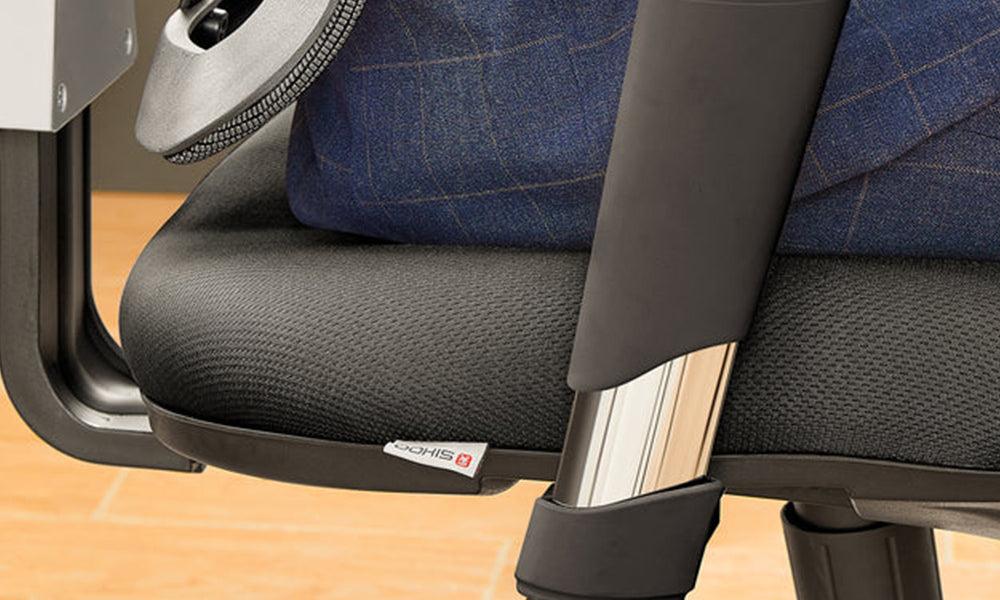In the modern workplace, comfort is paramount. Spending hours hunched over a desk can lead to discomfort and even long-term health issues. One crucial aspect of creating a comfortable workspace is adjusting your office chair to the right height. But what if your chair doesn't have a lever? Don't worry; you can still achieve the perfect chair height for your needs.
In this comprehensive guide, we will explore various methods and tricks to adjust your office chair height without a lever. Whether you're working from home or in a traditional office setting, these techniques will help you find the ideal seating position to enhance your productivity and well-being.
Assessing Your Chair
Before diving into the adjustment methods, it's essential to understand the different types of office chairs and their adjustability features. Not all chairs are created equal, and the absence of a lever may not necessarily mean your chair is non-adjustable. Assess your chair's design and available features to determine the possibilities for height adjustment.
Pneumatic Gas Cylinder Adjustment
Many office chairs without levers rely on pneumatic gas cylinders for height adjustment. This mechanism allows you to adjust the chair's height by simply shifting your weight. Here's how to do it:
a. Sit and Shift: Start by sitting in the chair and gradually shift your weight forward or backward to raise or lower the chair, respectively.
b. Test and Adjust: Test the chair's height by placing your feet flat on the floor. Ensure your knees form a 90-degree angle, and your thighs are parallel to the ground. If not, repeat the process until you achieve the desired height.
c. Safety Precautions: Be cautious when adjusting the chair, and avoid sudden, jerky movements to prevent accidents.
Using Cushions and Pillows
If your office chair lacks a lever and a gas cylinder, you can still achieve height adjustments through the strategic use of cushions or pillows. Here's how:
a. Seat Cushions: Place a seat cushion on the chair to boost your height. Opt for a cushion that provides comfortable support while allowing you to maintain good posture.
b. Back Cushions: To further customize your seating experience, consider adding a back cushion. This can help you maintain the right lumbar support while sitting at your desk.
c. Pillow Tricks: Experiment with different pillow placements to fine-tune your seating position. For instance, you can add a small cushion under your feet to elevate them slightly.
Desk and Workstation Adjustments
Your desk and workstation setup can also influence your seating comfort. Making some adjustments here can complement the chair height adjustments:
a. Desk Height: If your desk is adjustable, make sure it's at an appropriate height. Your elbows should form a 90-degree angle when you're typing, and your wrists should be in a neutral position.
b. Monitor Position: The height of your computer monitor is crucial for neck comfort. Adjust the monitor's height so that your eyes are at or slightly below the top of the screen when looking straight ahead.
c. Keyboard and Mouse: Ensure your keyboard and mouse are at a comfortable height and angle. You may need to use a keyboard tray or an ergonomic stand to achieve this.
DIY Chair Modifications
If you're feeling handy, you can consider making some DIY modifications to your office chair to achieve the desired height. Here are a few ideas:
a. Wooden Blocks: Attach wooden blocks or platforms to the chair's base to raise its height. Make sure they are securely fastened to prevent accidents.
b. Drilling Holes: If your chair has a metal base, you can drill additional holes to adjust the chair's height. This method requires precision and some DIY skills.
c. Wedge Cushions: Some wedge-shaped cushions are designed specifically for adjusting chair height. They can be a simple and effective solution.
Professional Help and Replacement Parts
If you're not comfortable with DIY modifications, consider seeking professional help. A furniture specialist or an office supply store may be able to assist you in finding replacement parts or suggesting alternative solutions for adjusting your chair's height.
a. Replacement Gas Cylinder: If your chair originally had a lever but the gas cylinder is faulty, you can replace it with a new one. Many office supply stores carry compatible replacement parts.
b. Consulting Experts: Reach out to professionals who specialize in ergonomic office setups. They can recommend suitable chairs or modifications based on your specific needs.
Conclusion
Achieving the right office chair height is crucial for your comfort and productivity. Even without a lever, there are numerous methods and tricks to tailor your chair's height to your preferences. Remember that everyone's body is different, so take the time to experiment and find the perfect setup that suits your unique needs.
By following the techniques outlined in this comprehensive guide, you can create a more comfortable and ergonomic workspace, whether you're working from home or in a traditional office environment. Your health and well-being are worth the effort, so don't hesitate to explore these methods and make the necessary adjustments to your office chair. Your body will thank you for it in the long run.



































